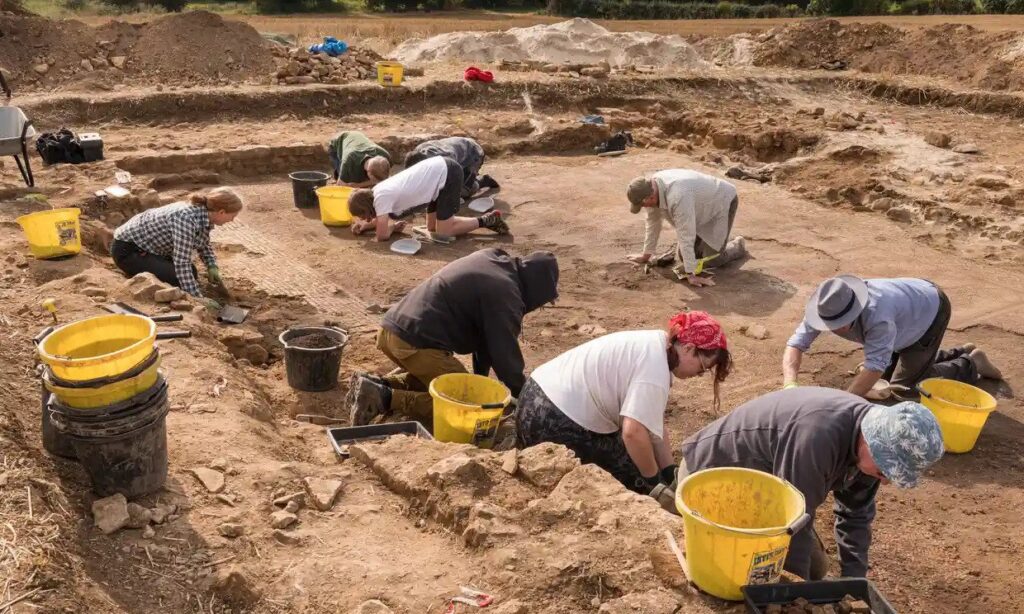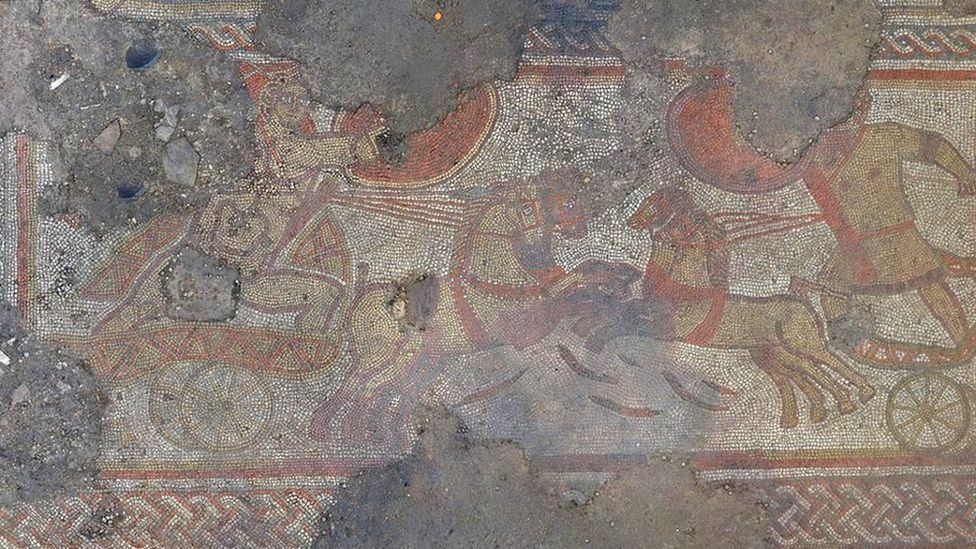Roman mosaic and villa complex found in Rutland farmer’s field

It was a family ramble through fields during lockdown last year that led to an “oh wow moment”: the discovery of a Roman villa complex containing a rare mosaic depicting Homer’s The Iliad, now thought to be one of the most remarkable and significant finds of its kind in Britain.

The mosaic – the first example found in the UK displaying scenes from the Greek epic poem, and only one of a handful from across Europe – was found beneath a farmer’s field in Rutland.
It is now protected by the Department for Digital, Culture, Media and Sport (DCMS) on the advice of Historic England.

The site was discovered by Jim Irvine, son of the landowner, Brian Naylor, during the 2020 lockdown, and has been investigated by archaeologists from the University of Leicester in partnership with Historic England and Rutland county council.
Their investigation revealed the mosaic lies within an elaborate villa complex encompassing a host of other structures and buildings.
It is likely to have been occupied by a wealthy individual from the late Roman period, sometime between the 3rd and 4th century AD.
“A ramble through the fields with the family turned into an incredible discovery,” Irvine said. “Finding some unusual pottery among the wheat piqued my interest and prompted some further investigative work.
“Later, looking at the satellite imagery I spotted a very clear crop mark as if someone had drawn on my computer screen with a piece of chalk. This really was the ‘oh wow’ moment, and the beginning of the story.”

The remains of the mosaic measure 11m by almost 7m and form the floor of what is thought to be a large dining or entertaining area.
Though mosaics were used in a variety of private and public buildings across the Roman empire and often featured famous figures from history and mythology, there are only a handful of depictions of Achilles’ battle with Hector at the conclusion of the Trojan war.
The villa is surrounded by what appear to be aisled barns, circular structures and a possible bathhouse.
Human remains were also found in the rubble covering the mosaic, which was likely interred after the building was no longer occupied.
John Thomas, deputy director of the University of Leicester Archaeological Services and project manager on the excavations, called it “the most exciting Roman mosaic discovery in the UK in the last century”.
“It gives us fresh perspectives on the attitudes of people at the time, their links to classical literature,” he said. “This [the villa’s owner] is someone with a knowledge of the classics, who had the money to commission a piece of such detail, and it’s the very first depiction of these stories that we’ve ever found in Britain.”
Duncan Wilson, chief executive of Historic England, added that discoveries like this were “so important in helping us piece together our shared history”.






